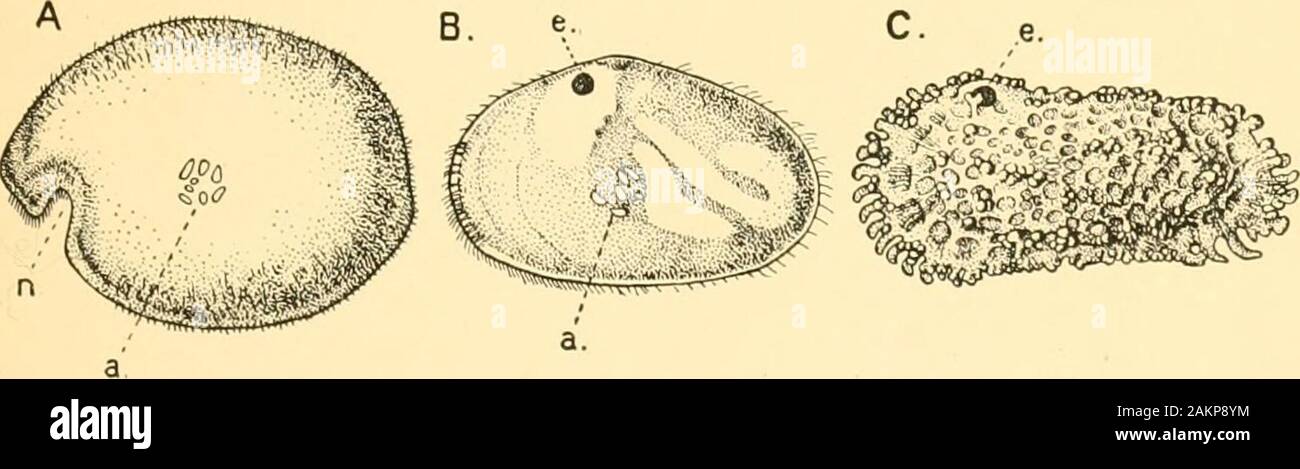Guide to the Crustacea, Arachnida, Onychophora and Myriopoda exhibited in the Department of Zoology, British Museum (Natural History) .. . other Crustacea, there being, at most, onlytwo pairs of trunk-limbs behind those belonging to the head-region. The carapace forms a bivalved shell completely enclosingthe body and limbs. There is a large, and often leg-like, palp onthe mandible. The antennules and antennae are used for creep-ing or swimming. Ostracoda, Copepoda. 29 The Ostracoda (Fig. 10) are for the most part extremely Table-caseminute animals, and only one or two of the larger species can

Image details
Contributor:
The Reading Room / Alamy Stock PhotoImage ID:
2AKP8YMFile size:
7.2 MB (263.9 KB Compressed download)Releases:
Model - no | Property - noDo I need a release?Dimensions:
2927 x 854 px | 24.8 x 7.2 cm | 9.8 x 2.8 inches | 300dpiMore information:
This image is a public domain image, which means either that copyright has expired in the image or the copyright holder has waived their copyright. Alamy charges you a fee for access to the high resolution copy of the image.
This image could have imperfections as it’s either historical or reportage.
Guide to the Crustacea, Arachnida, Onychophora and Myriopoda exhibited in the Department of Zoology, British Museum (Natural History) .. . other Crustacea, there being, at most, onlytwo pairs of trunk-limbs behind those belonging to the head-region. The carapace forms a bivalved shell completely enclosingthe body and limbs. There is a large, and often leg-like, palp onthe mandible. The antennules and antennae are used for creep-ing or swimming. Ostracoda, Copepoda. 29 The Ostracoda (Fig. 10) are for the most part extremely Table-caseminute animals, and only one or two of the larger species can be ?^° ^exhibited. Tliey occur abundantly in fresh water and in tlie sea, and their fossil remains are found in all geological formations fromthe oldest to the most recent. Nearly all the Ostracoda belong totwo Orders, the Myodocopa and the Podocopa, of which the formermay generally be distinguished by a notch (Fig. 10, n) in theanterior part of the margin of tlie shell which is absent in thelatter. A series of enlarged draw^ings gives some idea of the diversityof form and ornamentation in the sliells of tliese minute Crustacea.. Fig. 10. Shells of Ostracoda, seen from the side. A. Philomedes brenda (Myodocopa);B. Cijpris fitscafa (Podocopa); C. Cythereis ornata (Podocopa): all muchenlarged. n., Notch characteristic of the Myodocopa; e., the medianeye; a., mark of attachment of the muscle connecting the two valves ofthe shell. A. and C. are marine species, B. is from fresh water. (FromLaukesters Treatise on Zoology, after Brady and Norman, and Miiller.) Sub-class III.—COPEPODA. There are, at most, ten free somites behind the head. The Table-casecarapace is reduced or absent. The first thoracic limbs form No. 2.maxilipeds, and are followed by four or five pairs of two-branchedswimming feet. The posterior region of the body (the so-calledabdomen) is generally narrow^ed and is without limbs, but theterminal segment carries a pair of appendages, forming the caudal fork. Many Cop